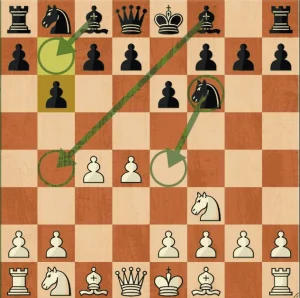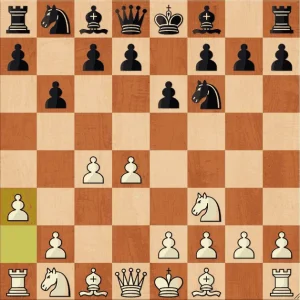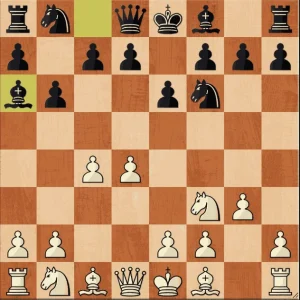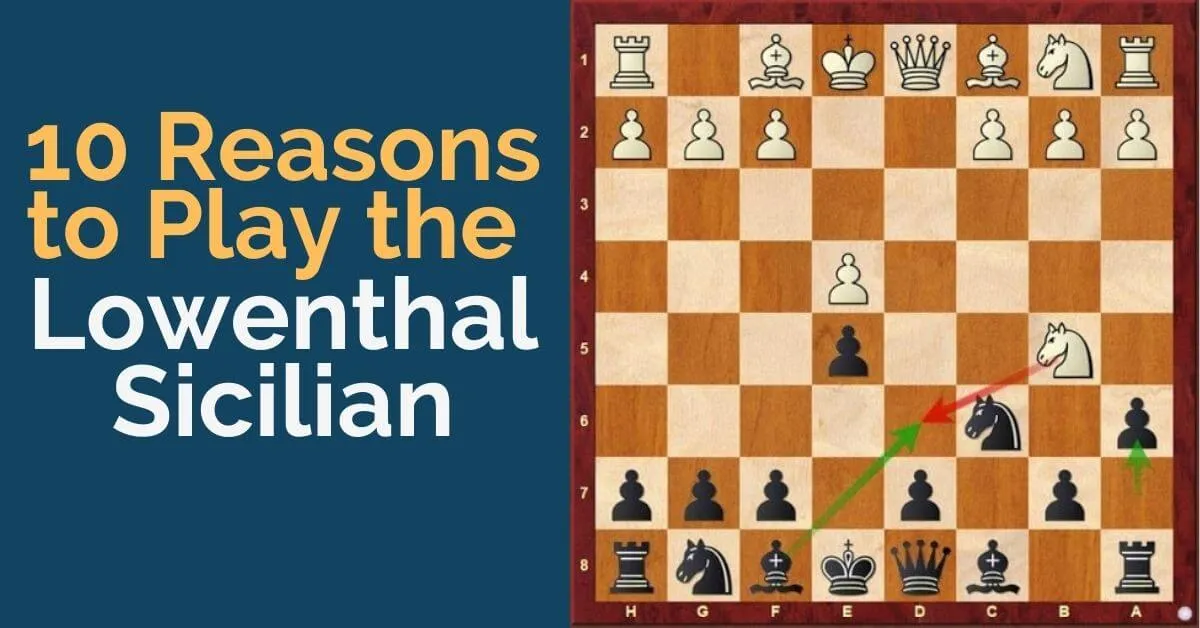Queen’s Indian Defense – Complete Guide

Queen’s Indian Defense is named because the queen’s bishop is developed with a queenside fianchetto.
The opening was first played by Nimzowitsch in 1914 and it started to gain popularity in the next decade when it was adopted by top leading players of the time like Alekhine, Capablanca, and Bogoljubow.
Even though many strong players use the Queen’s Indian Defense it has a reputation of being a dull opening amongst club players and beginners. While it is true that some lines of the Queens Indian Defense quickly lead to exchanges and lifeless positions. The reality is that Black has some sharp options.
The Queen’s Indian alone cannot be a stand-alone repertoire as it can be only used against 3.Nf3 therefore it is good to play it alongside the Nimzo Indian Defense.
Queen’s Indian Middlegame Plans
Plan Black
This is the starting position of the Queen’s Indian. Black plays 3.b6. It is important to note that you cannot play this move earlier as then White would take control of the center with Qc2, Nc3 followed by e4. The whole central theme revolves around controlling the e4 square with the pieces:
Black places the Knight on f6 and the bishop on the a8-h1 diagonal, and the dark-squared bishop goes to b4 to attack the knight on c3.

Plan White
White has various ways to counter this. The two main lines are 4.g3 and 4.a3. Before going to them let’s take a look at other possible tries by White:
Queen’s Indian Petrosian Variation 4.a3

The variation got its name after the former World Champion Tigran Petrosian, who used it to great success in the 1960s. Later on, Kasparov would also go on to score brilliant victories with it in the 1980s
At first glance, the move 4.a3 looks like a passive move. On further thought, the idea becomes clear. It is played to stop 4..Bb4. That is the thematic position of the dark-squared bishop in the Queen’s Indian.
But in reality, the Petrosian Variation is the most aggressive way to fight against the Queen’s Indian.
After a3, White is ready to play Nc3 or either prepare the e4 or d5 advance.
Queen’s Indian Model Games
Game 1
Game 2
Modern Variation 4..Ba6
The g3 variation is another main line in the Queens Indian Defense. The idea is that since the fight is going to revolve around the d5 and e4 squares, white decides to put the bishop on the a8-h1 diagonal to aim for those squares.
This move has another advantage in that White delays the development of the b1 knight so it keeps the f8 bishop guessing.
Black now has the interesting idea of Ba6 and it is the starting point of the modern variation. You can check the starting position of the Modern variation below:

The move 4..Ba6 looks like an anti-positional move concerning the opening themes of the Queens Indian Defense. The idea is that black puts pressure on c4 (which is another common target in the Nimzo and Queen’s Indian).
By putting pressure on c4 black wants white to commit to a particular structure of piece placement. The bishop will then usually return to b7 after achieving its objective.
Model Games
Game 1
Game 2
Conclusion
In conclusion, the Queen’s Indian Defense is a versatile opening that top players throughout history have utilized. Despite its reputation for being dull, it offers sharp options for Black. The Petrosian variation provides an aggressive way for White to counter Black’s setup. Black also has a lot of strategic ideas and plans to get around White’s plan. Overall, the Queen’s Indian Defense offers strategic depth and flexibility for players of all levels.
You also might like King’s Indian Defense Dealing with the Four Pawns Attack as well as Off Beat Lines in the King’s Indian 6…Nbd7.
FAQ
Is the Queen’s Indian Defense Refuted?
The Queen’s Indian defense is by no means refuted and remains a solid and dependable opening.
Is the Queen’s Indian Defense good?
Yes, this opening is playable for players from beginners to Grandmasters. The Queens Indian Defense offers new and fresh positions that black players can use to play for a win.
https://thechessworld.com/store/product/queens-indian-defense-with-im-marcin-sieciechowicz/










Comments: